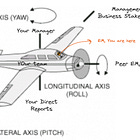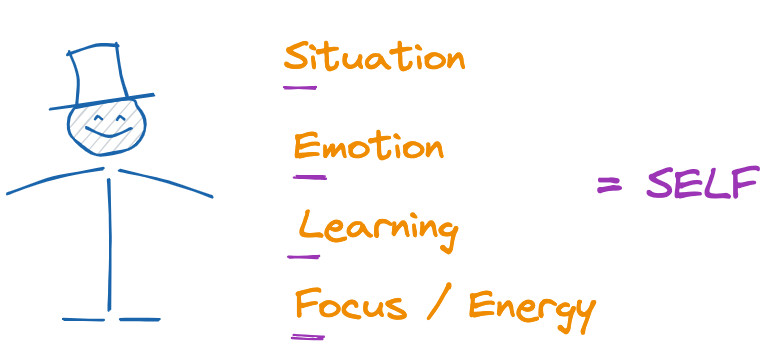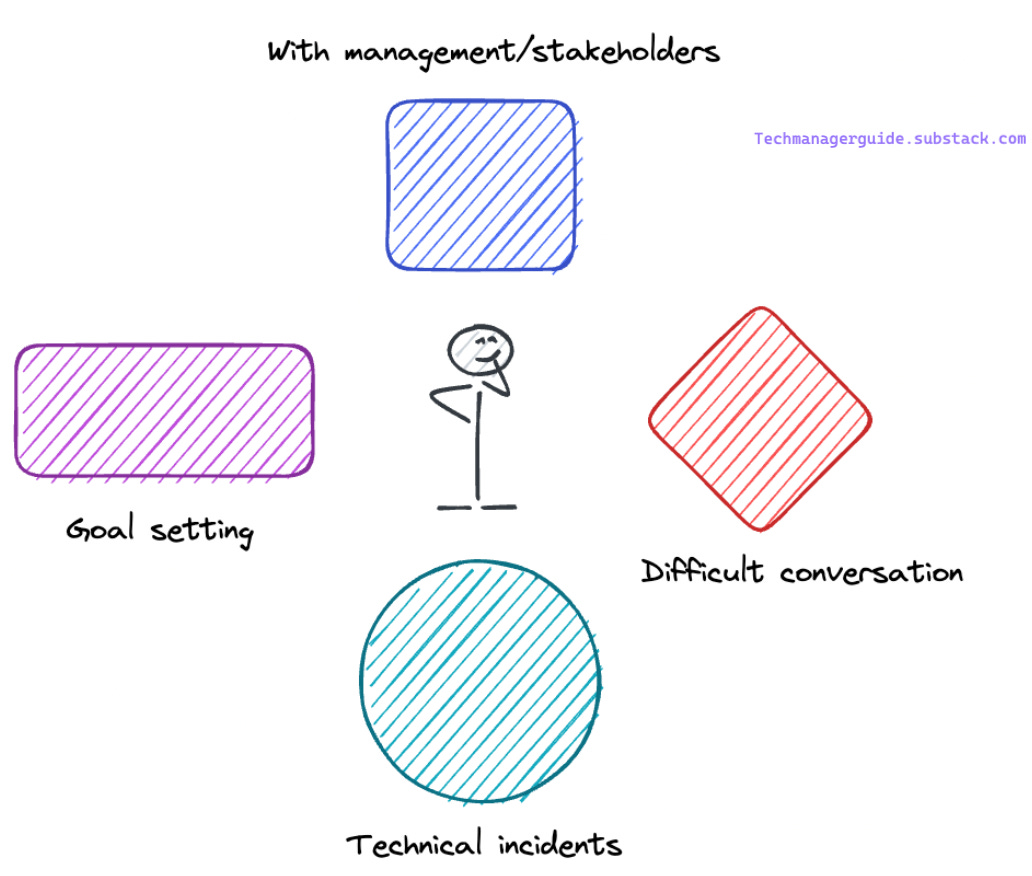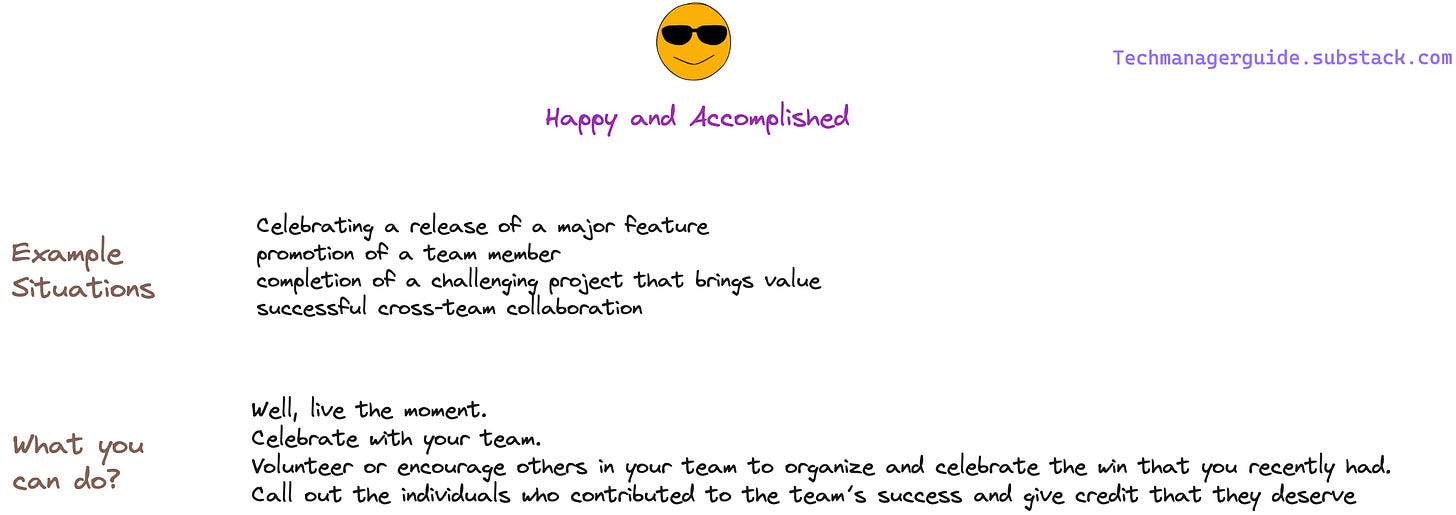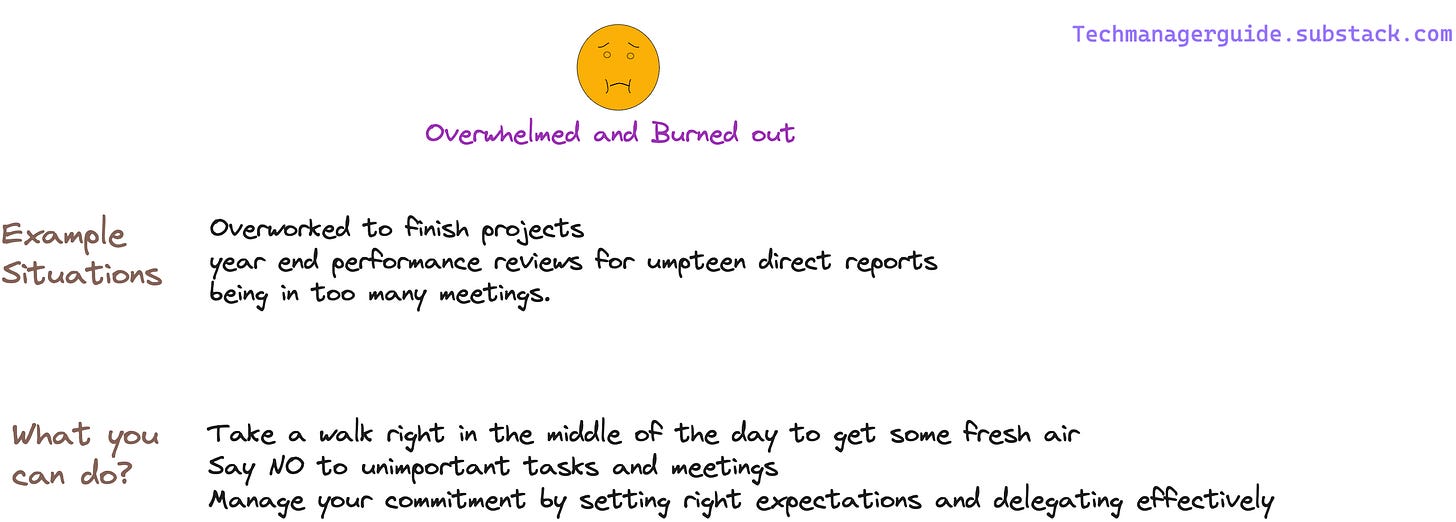S in SELF Management - Managing Situations
Framework to manage diverse and challenging situations for Engineering Managers
Last time, I was drawing parallel between you - Engineering Managers and an airplane ✈️ pilot. If you’ve missed it, do check it out here.
You were told that you have to manage people well.
I have to tell you that you got the right advice. But people are everywhere around you: your direct reports, your manager, peer engineering managers, executives and stakeholders. Whom should you manage well first?
It’s pretty simple — Start with YOU. Before you start managing others, make sure you manage yourself better. To bring out the best in others, you first need to bring out the best in yourself. Not managing yourself well will impact not only you but also your team and the environment. Such is the position that you’re in and the influence that you have.
How do you manage yourself? - Answer lies in “YourSELF”.
Situation: How do you handle diverse situations that are challenging, new and unexpected?
Emotion: How do you regulate your own emotions and what is the significance to your team and the environment that you’re in?
Learning: What are you currently learning? How, when and where are you learning?
Focus and Energy: Focusing in the middle of multiple priorities. Being mindful of your own energy levels and becoming energy efficient.
Situation
Remember the situation you had in the morning with your product counterpart where you were involved in heated exchange regarding product and engineering priorities? A mindful 1-1 an hour later? ah how can you forget the crunch situation when your team was sweating at resolving your system downtime and you‘re handling all sorts of communication with your stakeholders? - Being in diverse situations is ‘Business As Usual’ for Engineering Managers.
You‘ll be in and out of different situations throughout the day. Having situational awareness and clarity on the role you play in every situation that you‘re in matters a lot. How you perceive and handle situations defines you as your temperament has a major role to play.
Types of Situations
Mood and tone of situations that you’ll come through may not be the same. Let’s take a look at a few of those situations and get you prepared.
Great, above examples should give you some idea about situations that you’ll come across and how you can keep yourself composed. How can you be more proactive and have situational awareness right from the start? - Anticipate, Assess, Immerse and Reflect.
Anticipate
Start off your day by anticipating what situations you‘ll be into throughout the day by creating a situation timeline.
But can you go completely prepared for every situation on a given day? - it‘s not possible and I wouldn‘t recommend doing so as it might look staged and the situation may not feel natural for you and everyone involved. Instead go “half prepared” so that you don’t look lost but knowing what you’re up to.
It can be a meeting that you’re invited to but don’t have much context about, a weekly 1-1 meeting, reporting progress to the leadership team - it can be any sort of situation. Anticipating what would be the mood in the room and expectations will help you in going prepared and tackle the situation with a pragmatic mindset.
Disclaimer: There will be unprecedented situations that you may not have prepared for. Don’t worry, it’s completely normal. Keep yourself calm and composed, be pragmatic and focus on what’s important at that moment. The more you handle different situations, the better you will get at it.
Assess
As soon as you’re into a situation, assess the mood and context of the people in that situation. What’s the emotion and motivation going around in the room? What is the expected outcome of the situation? - If you manage a situation without assessing it, you will come across as an incompetent manager or someone who creates too much stress otherwise that could have been handled cool-headed.
Immerse
Immersing into a situation is being mentally and emotionally present. There will be times where you will get into a situation with a wavering focus. You were thinking about the last difficult conversation that you had with your manager, prioritization that didn’t go well or you might be thinking about a future managerial task that’s important but you haven’t completed yet. With wavering focus, you can’t engage in a situation or contribute to it but rather can only remain a passive observer.
What can you do to completely immerse yourself in a situation?
Don’t be preoccupied with thoughts and concerns unrelated to a situation: Before you get into a new situation, find some time to transition into the context of that situation and do a bit of preparation of what you’ll be up to.
Listen with unwavering attention: Clarify your questions and understand the goals, challenges and dynamics of the situation.
Understand the role you play: Rather than being a passive observer, immersion requires active participation. This may involve contributing ideas, making decisions, collaborating with others, or taking on a hands-on role within the context of the situation.
Staying committed to the purpose of the situation, empathize and hear other’s perspectives to be less self-oriented.
Reflect
As you come across different situations in a day, it takes some time to realize what just happened. Either you might have overreacted, underreacted or haven’t reacted to a situation that you should have reacted to. Unless you reflect on it, you can’t fully comprehend the dynamics, your role, and the impact those situations had on yourself and your team.
Ask in your 1-1 about how did you handled a specific situation and ask for feedback from your direct reports and your manager to understand their perspective as their inputs are equally important to improve your situational awareness.
And now it’s your turn: Draw roughly a timeline of situations that you will go through throughout a given day as an engineering manager. Pick 2 diverse situations, explaining the mood and how you will handle them. Continue explaining how well you anticipated, assessed and immersed into those situations.
That’s all for now. Managing diverse situations is not the easiest but the intent that you show and not shying away from handling challenging situations make you a better Engineering Manager over time.
What’s your experience in managing diverse situations and what’s the most challenging? Let me know in the comments.
Next up let’s see how you can regulate your own emotions as part of this SELF management series for Engineering Managers.
Stay tuned!


